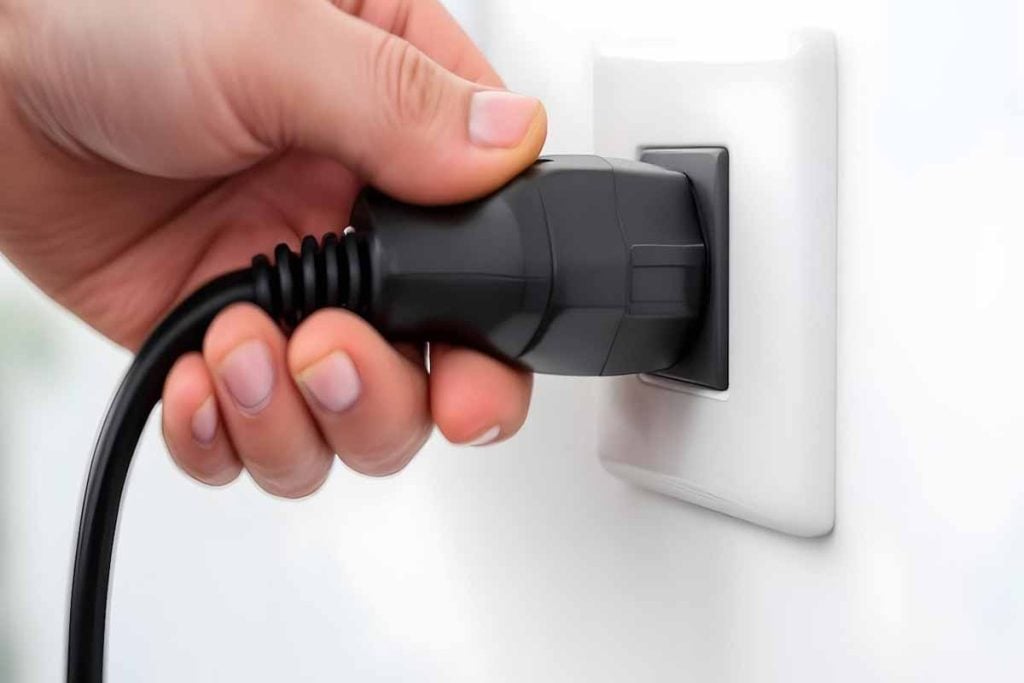Ever notice how a quiet evening turns noisy the second you heat dinner? Lights stay calm, the fridge hums, yet one switch flips and the meter sprints. The culprit isn’t rare; it’s the everyday helper most of us trust without a thought. Those short, blazing bursts send your energy use soaring and your budget along with it. The good news feels simple: a few small tweaks tame the spikes, keep flavor high, and stress low. Here’s how to spot the waste and win back control.
Why ovens top the power charts at home
An electric oven often sits quietly until the thermostat calls for heat, then surges. Typical models draw 2,000 to 5,000 watts while heating, which explains the eye-opening comparison. In short bursts, one oven can rival the load of 65 refrigerators running at once during peak demand in your kitchen.
Monthly totals vary with how you cook. Light use may land near 40 kilowatt-hours, while frequent roasting and baking can push closer to 90. Because preheating and cycling repeat, the oven’s energy appetite climbs fast, especially when you run long sessions or reheat single dishes in a big cavity.
Contrast that with a refrigerator. It sips 300 to 800 watts, operates steadily, and cycles to maintain a set chill. The job is maintenance, not creation of high heat. That steady, lower draw explains why the fridge hums all day yet rarely spikes your bill the way the oven can.
How to trim energy while you cook
Plan sessions, not single dishes. If the oven is hot, fill the rack space with sides, desserts, or breakfasts for tomorrow. Batching turns one preheat into many meals and spreads the cost across them. When schedules allow, cook for the week, then freeze or chill for quick reheats.
Use the machine’s heat, not just its timer. Slide food in as preheat completes, and shut the oven off a few minutes before doneness. Trapped heat finishes the job. Keep the door closed; every peek dumps warmth. A window, light, and thermometer reduce guesswork without extra cycles.
Match tool to task. Small portions belong in a microwave, toaster oven, or air fryer, not a full-size cavity. Sheet pans that fit well heat faster. Stoneware keeps temperature when you cut power. With these swaps, you’ll serve the same meals with less energy and less waiting.
What standby draw really costs you
Many ovens sip power while “off.” Clocks, sensors, and digital panels stay alive until the plug comes out. Field research in California homes measured standby loads across gadgets around 67 watts per household, a sliver that adds up to 5% to 26% of yearly electricity, depending on devices.
One homeowner noticed the utility meter creeping after midnight. The glow of the oven clock gave the clue. Unplugging halted the trickle and cut background usage. If yanking a plug is awkward, a switchable outlet or smart plug makes it simple to kill accessory circuits between cooking sessions.
Check whether your model loses settings when cut from the wall. If so, aim for a compromise: plug in before a planned session, then disconnect after cooldown. That routine preserves convenience yet trims stealth consumption. It also reinforces a mindful habit that returns real energy savings across a year.
Comparing appliances and energy spikes
Numbers give context. While preheating or cycling, an electric oven draws 2,000 to 5,000 watts. A typical refrigerator uses 300 to 800 watts, yet runs gently all day. Those roles differ: the fridge maintains temperature; the oven creates it, which is why short, hot bursts dominate the bill.
Monthly totals land near 40 to 90 kilowatt-hours for many households that cook often. By contrast, usage tallies vary widely across homes and habits. In a sample of 100 homes, according to one study, ovens reached up to 224 kilowatt-hours per year within that group’s observed behaviors.
Both sets of figures can be true at once. The study tracked specific people with specific routines, while your totals hinge on menu, season, and batch size. Calibrate expectations locally. Track sessions with a plug-in meter and adjust recipes to wring more energy value from each hot cycle.
Simple habits that compound savings
Use modes that move heat. Convection shortens bake times, spreads warmth evenly, and can drop set temperatures. Preheat only when texture demands it; many casseroles and sheet-pan meals can start cold. Place racks so air circulates freely, and avoid empty metal that soaks heat without feeding dinner.
Choose cookware that cooperates. Dark, thin sheets heat fast; heavy cast iron stores warmth for carryover. Lids and foil trap moisture, which helps food finish sooner. A probe thermometer prevents overshooting targets. Clean door glass and seals; lost insulation leaks cost. Small fixes stack into measurable gains.
Consider beyond the meal. Batch-prepare grains or roast surplus vegetables while the temperature is elevated, then depend on swift reheats throughout the week. The food tastes superior to made-to-order takeout, and the strategy amplifies every cooking minute into multiple dinners with reduced energy and duration per serving.
Why these small shifts change kitchen costs fast
An oven delivers comfort and convenience, yet it can bite into your budget more than you think. With the wattage, the peaks, and the stealth draw in view, you can steer habits with confidence. Batch meals, finish on carryover heat, curb door peeks, and kill standby. Over months, those simple moves protect your wallet, reduce waste, and respect the planet’s energy resources without asking you to give up flavor, creativity, or time at the table.
